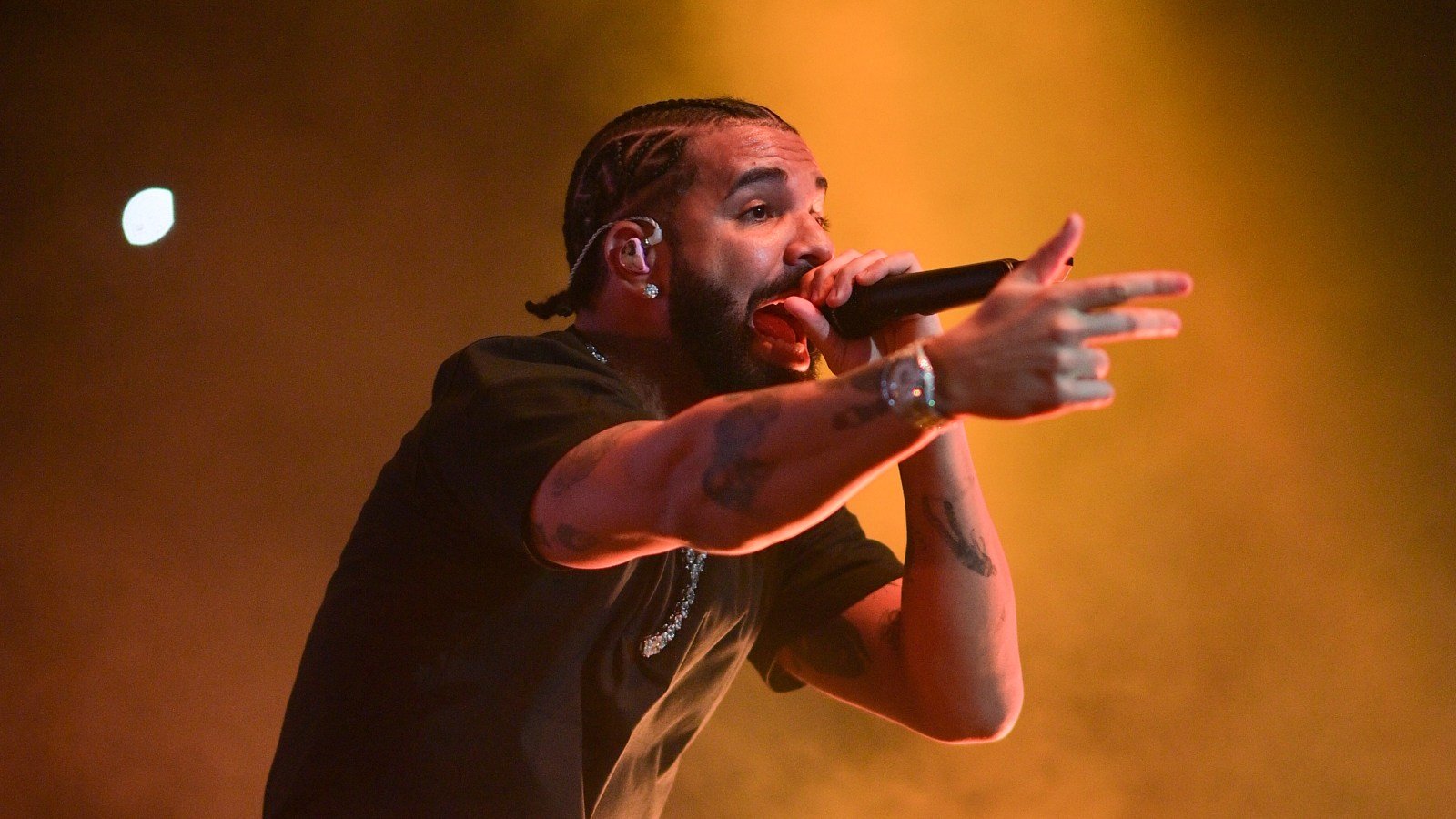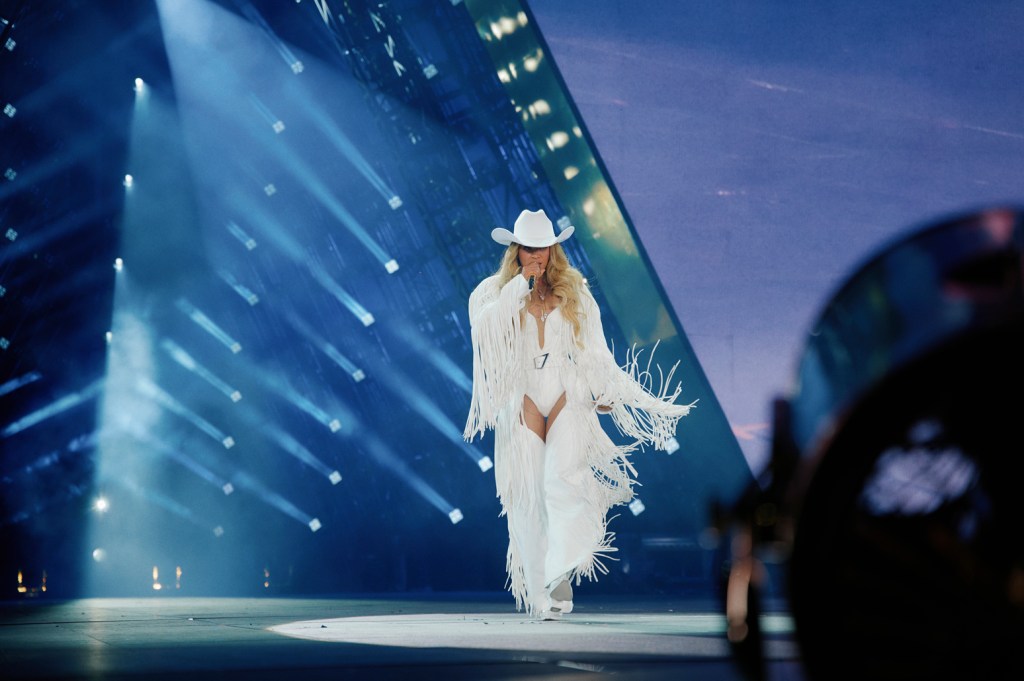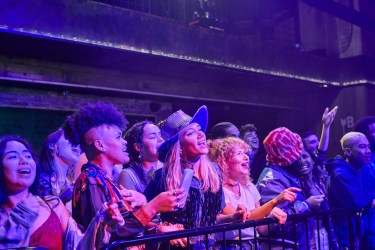Hold up, music fans! Queen Bey’s “Renaissance” world tour just got a whole lot more complicated. 🤯 Reports are swirling that Beyoncé has been served a cease-and-desist order by Sphere Entertainment over footage used in her “Cowboy Carter” tour promo.

This isn’t just some petty copyright dispute – the stakes are high, the drama’s intense, and the questions are piling up. What exactly is in the footage? Why is Sphere taking such drastic action? Could this impact the tour itself?

Analyzing the “Sphere Picking” Interlude: Artistic Intent vs. Intellectual Property

Beyoncé’s “Sphere Picking” interlude, a brief sequence in her “Cowboy Carter” tour where she manipulates a CGI version of the Sphere venue, has ignited a debate about artistic expression versus intellectual property rights. While some argue that the sequence is a playful nod to the Las Vegas entertainment landscape, Sphere Entertainment Group (SEG) contends that its unauthorized use constitutes a breach of intellectual property.
The crux of the issue lies in the interpretation of “fair use” in creative contexts. Fair use is a legal doctrine that permits limited use of copyrighted material without permission from the copyright holder, under certain circumstances such as commentary, criticism, news reporting, teaching, scholarship, or research. However, determining whether a particular use qualifies as fair use can be complex and often hinges on factors like the purpose and character of the use, the nature of the copyrighted work, the amount and substantiality of the portion used, and the effect of the use upon the potential market for or value of the copyrighted work.
In the case of Beyoncé’s interlude, SEG argues that the prominent display and manipulation of their Sphere venue, a distinctive and recognizable landmark, constitutes unauthorized use that harms their brand image and potentially diminishes the value of future licensing opportunities. Conversely, Beyoncé’s team might argue that the interlude falls under fair use as a commentary on the Las Vegas entertainment scene or as a satirical take on the Sphere’s ambition.

Fan Reactions: Speculation, Memes, and the Power of Viral Moments
The cease-and-desist letter, widely reported by news outlets, has sparked a flurry of fan reactions across social media platforms. Memes, GIFs, and humorous commentary have flooded Twitter and Instagram, reflecting the playful and often irreverent nature of online fandom.
Many fans have expressed amusement at the situation, seeing it as a power play by SEG and a testament to Beyoncé’s influence. Others have used the hashtag #SpherePicking to create their own interpretations of the interlude, generating a wave of user-generated content that has further amplified the story. The incident has also fueled speculation about a potential future residency at the Sphere, a scenario that would undoubtedly be a major coup for the venue.
The power of viral moments in shaping public discourse is undeniable. The Beyoncé and Sphere saga highlights how seemingly minor incidents can quickly escalate into online sensations, generating widespread engagement and influencing public perception. The rapid spread of information and the ease with which users can create and share content have created a dynamic environment where fan reactions can have a significant impact on real-world events.
Legal Implications: The Precedent Set and Impact on Future Performances
The legal battle between Beyoncé and SEG carries broader implications for the entertainment industry, particularly regarding the use of intellectual property in live performances. The outcome of this case could set a precedent for future disputes over the unauthorized use of trademarks, logos, and other copyrighted materials in concert productions.
Artists and performers often incorporate elements of popular culture, recognizable landmarks, and brand imagery into their work as a form of commentary, satire, or simply to enhance the visual spectacle. However, the boundaries of what constitutes fair use in these contexts can be blurry, and the rise of digital imagery and viral content has further complicated the landscape.
The case could lead to increased scrutiny of artist’s use of intellectual property in live performances, potentially prompting performers to seek explicit permission from rights holders or to modify their productions to avoid potential legal issues. This could have a chilling effect on artistic expression, particularly for artists who rely on incorporating pop culture references and recognizable imagery into their work.
Beyond the Backlash: The Bigger Picture
Las Vegas’ Entertainment Landscape: The Sphere’s Ambitions and Beyoncé’s Reach
The dispute between Beyoncé and SEG unfolds against the backdrop of a fiercely competitive entertainment landscape in Las Vegas. The Sphere, a colossal venue boasting cutting-edge technology and immersive experiences, is positioned as a game-changer in the city’s already vibrant entertainment scene.
Beyoncé, a global superstar with an unparalleled track record of success, represents the pinnacle of artistic talent and audience appeal. Her decision to perform at Allegiant Stadium, rather than the Sphere, highlights the ongoing competition for top-tier performers and the strategic considerations involved in securing coveted dates in a rapidly evolving entertainment market.
Implications for Live Events: Navigating IP Rights and Creative Expression
The Beyoncé and Sphere case serves as a cautionary tale for artists, promoters, and venue operators navigating the complex legal and ethical considerations surrounding intellectual property rights in the live events industry.
As technology advances and the lines between reality and virtual experiences blur, the potential for disputes over the use of copyrighted materials in live performances is likely to increase. Clear guidelines, open communication, and a collaborative approach between artists, rights holders, and venue operators are essential to fostering a creative and legally sound environment for live entertainment.
The Future of the “Cowboy Carter” Tour: Will the Sphere Resurface?
The outcome of the legal proceedings between Beyoncé and SEG remains to be seen. However, the incident has undoubtedly cast a spotlight on the intersection of artistic expression, intellectual property, and the ever-evolving landscape of live entertainment.
Whether or not the “Sphere Picking” interlude resurfaces in Beyoncé’s “Cowboy Carter” tour, the case serves as a valuable case study for the industry, highlighting the need for careful consideration and open dialogue regarding the use of intellectual property in creative contexts.
Conclusion
So, it seems Queen Bey’s reign isn’t absolute, at least when it comes to using copyrighted footage. The clash between Beyoncé’s “Cowboy Carter” tour visuals and Sphere’s proprietary content highlights the ever-evolving battle over intellectual property in the age of digital performance. While Beyoncé’s artistry undeniably shines through her creative use of imagery, this cease-and-desist serves as a stark reminder that even the most iconic artists must navigate the legal complexities of borrowing and repurposing existing material.
This skirmish between music and technology giants raises crucial questions about the future of live performance. Will we see a rise in stricter copyright enforcement surrounding immersive experiences like Sphere? Will artists be forced to rely more heavily on original content, potentially limiting their creative freedom? Or will this become a catalyst for new, collaborative models where artists and tech companies forge innovative partnerships that respect both artistic expression and intellectual property rights? The answers, like the blurred lines between virtual and reality, remain to be seen. What’s clear is that the “Cowboy Carter” saga is just the tip of the iceberg, foreshadowing a future where the lines between inspiration and infringement will be continuously tested.
